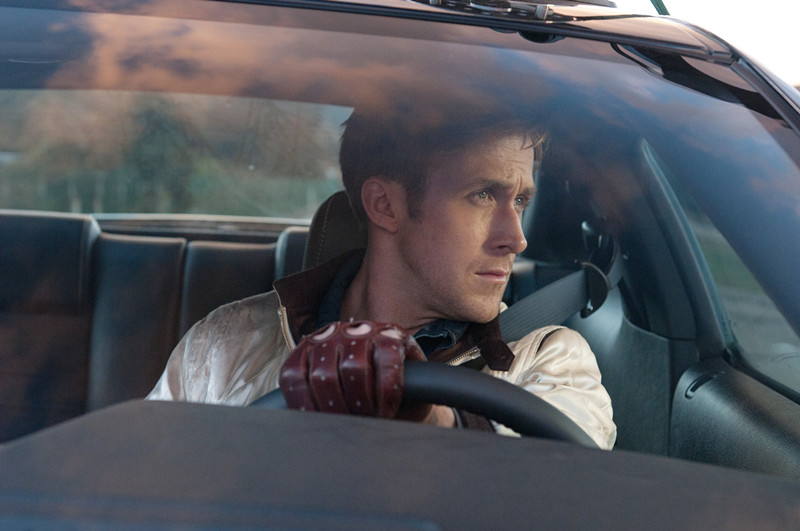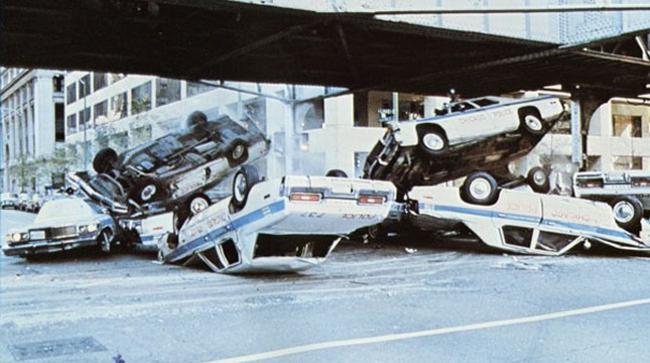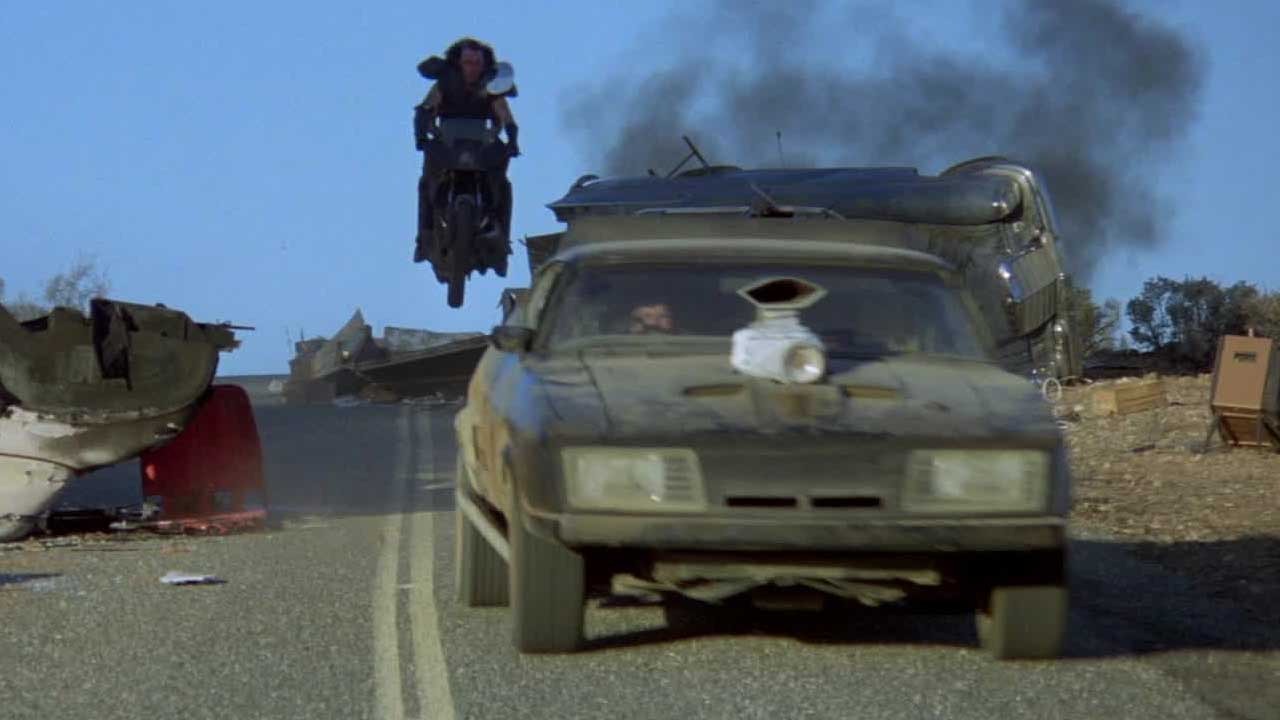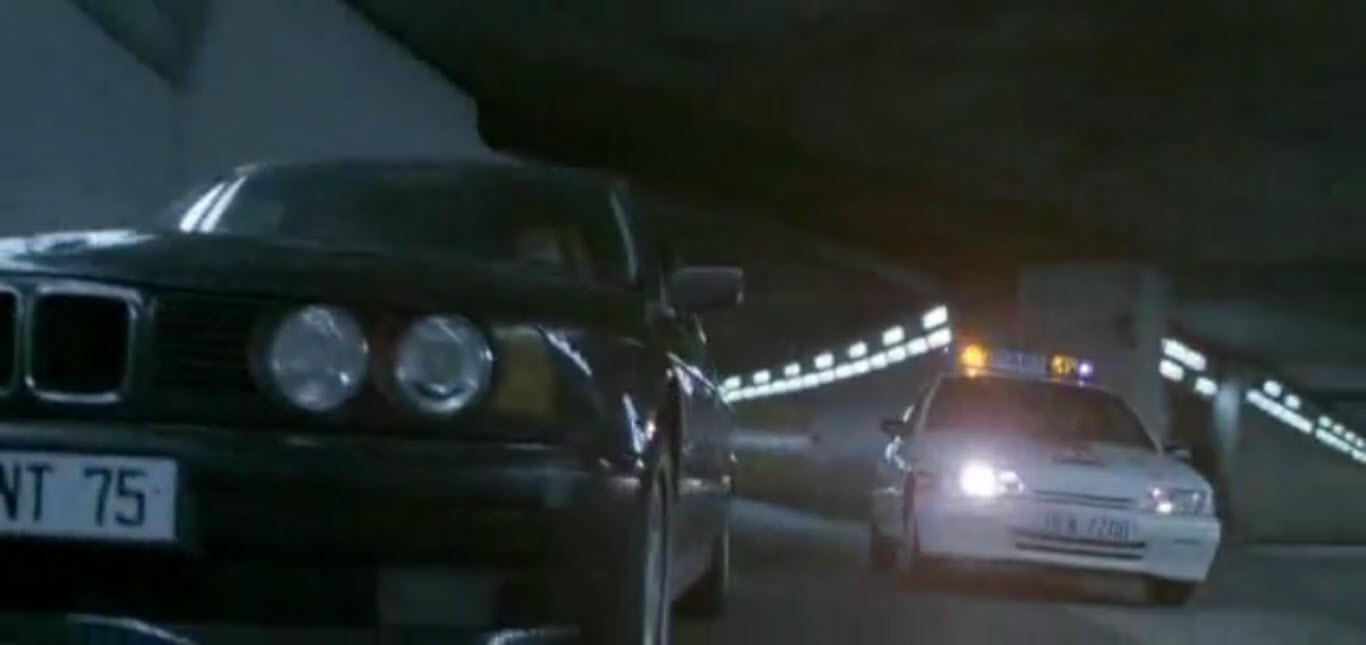8. Mad Max: Fury Road (2015)

The Mad Max series has been responsible for some of the greatest action sequences ever committed to film. Each film manages to one up the last one and the fourth and latest in the series is no exception. Thirty years had passed since Beyond Thunderdome and Fury Road had been trapped in development hell for over a decade before it was made. However, it was well worth the wait. Miller had not just shot car chases: he had shot asymmetrical warfare.
These were not just cars ramming into each other, the War Boys and the various other tribes that pollute the post-apocalyptic Australian wasteland have perfected warfare on the road. Semi-trailers have become fortresses on wheels, armed to the teeth and carrying fanatical warriors spray themselves with chrome paint before lunging at enemy vehicles armed with explosives. It is pure chaos.
The final car chase, leading back to the citadel, defies all odds. In a era of CGI, Miller goes old school. The vast majority of seemingly impossible shots all achieved under the direction of Miller and cinematographer John Seale. Fury Road proved two things with its success: audiences have high expectations and it is possible to meet them.
7. The Italian Job (1969)

The film that not only made Michael Caine the symbol of British cool, but also transformed the Mini Cooper S into an icon. The sight of the red, blue and white convoy sweeping through the streets of Turin, across a lake and even through a storm water drain before disappearing into the back of the truck, proves that any car can create a great chase.
Sure, the sight of the Minis being dumped over the cliff once the deed is done can be hard to watch for car lovers, but the film oozes with coolness and blends a perfect cocktail of thrills and laughs. The film could be considered nothing more than just a very expensive commericials for the British Motor Corporation, but it has stood the test of time, been the source of a mediocre remake, and is still remembered solely for its car chase.
6. Drive (2011)

While his two latest films, Only God Forgives and The Neon Demon, have divided audiences, some calling them genius, others pretentious drivel, Drive remains one the most hard hitting and original art house flicks of the 21st Century. With a engrossing story, cinematography made of a pastiche of colours and memorable performances from Ryan Gosling, Carey Mulligan, Bryan Cranston and Albert Brooks.
Many of the chase scenes are homages to classics, including the robbery, reminiscent of the voyeuristic cinematography the earlier 1970’s classics. However, the odd exception is the opening police pursuit where the unnamed Driver (Ryan Gosling) is recruited to act as the wheelman for a gang of thieves.
There are no big stunts or high-speed pursuits; instead Driver relies on his wit and patience. Frequently stopping and parking, waiting for the roving police patrols to pass before moving on. This is a game of chess and Refn knows just how to move the pieces.
5. The Blues Brothers (1980)

It is almost impossible to categorise The Blues Brothers in terms of genre. Is it a comedy? A crime caper? A musical? Or a satire? Whatever it is, it is definitely a cinematic classic. One minute, the magical duo are performing a mixture of blues and country/western to recruit the old band, the next minute they are at war with law enforcement, Neo-Nazis and Princess Leia herself, Carrie Fisher, wielding an array of deadly weapons.
There are plenty of chases to pick from, including the shopping mall chase (with both Jake and Elwood commenting on the various shops in a nonchalant way) but the true classic is the finale, “It’s 106 miles to Chicago, we got a full tank of gas, half a packet of cigarettes, it’s dark…and we’re wearing sunglasses”, explains a monotonous Elwood, “Hit it!” Jake replies. From there, director John Landis pulls out all the stops.
The Brothers let nothing stop them from reaching Chicago, even the arrival of the military. What makes the chase so memorable is its farcical nature. Car crashes resemble not so much the horrors we witness on the road, but rather a child playing with his toys. Cars go flying everywhere. Pile-ups are sometimes three cars deep. This is true cinematic magic.
4. Mad Max 2: The Road Warrior (1981)

While Fury Road received all the love from critics, the original sequel, The Road Warrior, is responsible for the franchise we know and love today. Originally, Mad Max was a grindhouse exploitation revenge thriller, before the series morphed into the post-apocalyptic thriller we know and love, further descending into inhuman anarchy as each sequel was produced.
To this day, the final chase between Max, driving the tanker, and the army loyal to the warlord Lord Humungus remains not only one of the most intense car chases in cinema, but also one of the most brutal. The biker that flies over the handlebars into somersault was all real and so were the injuries he sustained.
This was the era of gonzo filmmaking. Shotgun blasts decimate the gang and any unfortunate soul caught under the wheels of the semi-trailer are torn to shreds. Sure, those are obviously dummies but the sights of limbs flying off and bending the wrong way is enough to send a chill down your spine.
Director George Miller stated that one of his inspirations for the films was his experience as an ER doctor in Queensland, witnessing the effects of car accidents. Clearly this has left a scar on Miller’s psyche. The damage done to the human body in a vehicular collision is on full display.
3. Ronin (1998)

Writer David Mamet asked producers that his name be removed from the script or changed to pseudonym. God knows why. The script is razor sharp with tight pacing, perfect characterisation and action scenes that will keep you on the edge of your seat. In feudal Japan, Ronin was a title given to samurai with no masters, men that were considered to have no honour, fighting only for money. In the film, our heroes are modern day Ronin, old school warriors that once fought in the Cold War. Now, they fight for money, hiring themselves out to the IRA to collect a mysterious briefcase. A perfect theme when considering Ronin’s car chases.
Director John Frankenheimer is a fellow Ronin. A veteran of classics such as The Manchurian Candidate, The Train and Seven Days in May, Frankenheimer is an old school director. Pacing, finesse and care go into every shot and it shows with Ronin.
The film crafts many brilliants car chases, including the robbery in Nice, but, for an analysis of the craft, you cannot beat the chase between Sam and Vincent against Deidre and Seamus through the tunnels of Paris. Frankenheimer is not squeamish with collateral damage as pedestrians and fellow motorists fall victim to bullets and hit and runs. Frankenheimer’s chase scenes are an art form, one that unfortunately is slowly being replaced by CGI.
2. Bullitt (1968)

There is no denying Steve McQueen’s legacy as the king of cool. Films like The Magnificent Seven, The Great Escape, The Towering Inferno and The Sand Peebles have established him as one of Hollywood’s greatest icons. Yet, in one of his most memorable films, he is not the defining element.
In his 1968 Ford Mustang GT, Lt. Frank Bullitt pursues two hitman, responsible for the murder of a federal witness and two fellow police officers. The pair drive a 1968 Ford Charger R/T. For car nuts, this is a challenge made in heaven. Two machines of pure beauty go head to head on San Francisco’s iconic Russian Hill before hitting the main road.
For many, Bullitt is considered the number one chase scene in cinematic history. But on this list, it comes in at a close number two because while this chase made the film, the next choice was a great chase in a great film.
1. The French Connection (1971)

Not only one of the greatest car chases of all time, but one of the greatest films. William Friedkin’s The French Connection came out of nowhere and cracked open the 1970’s, a golden era for Hollywood. With airtight direction, solid pacing, tension, textbook directing from Friedkin and top tier performances from both Gene Hackman and Roy Scheider.
Friedkin gets intimate with this chase. No wide shots, no scenery. Just the faces of those involved and their perspectives. We see Popeye Doyle (Hackman) swerve and swing, narrowly missing pedestrians while the rogue assassin watches from above, in an elevated train, surrounded by dozens of commuters that could soon become victims.
Friedkin is not afraid to raise the stakes, showing that he is willing to break the rules when a young woman walking with her child is gunned down in the place of Popeye. Anyone can be a victim.
What makes this chase all the more ground breaking is its guerrilla aesthetic. One vehicle sideswiped by Popeye’s driving did not even belong to the production, but to someone just going off to work. This is a style of filmmaking that sadly, is hardly seen anymore, especially in mainstream cinema.
Author Bio: Jack Books works at carcover.com. He is a big fan of cars and movies.